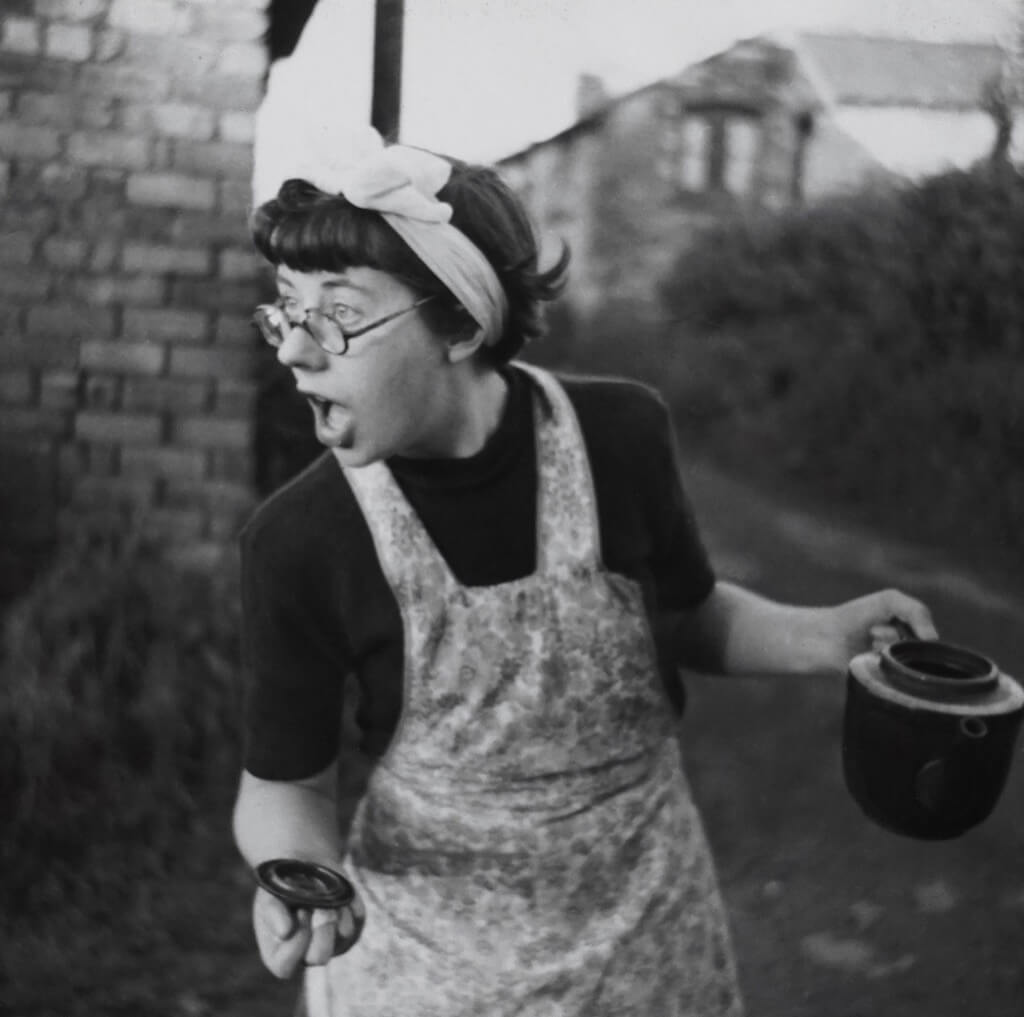Denny’s, the iconic American diner chain, boasts a rich history that traces its origins back to a humble doughnut shop. Surprising as it may seem, this beloved eatery had a rather sweet beginning that few might imagine when looking at its expansive menu today.
Back in 1953, Richard Jezak and Harold Butler ventured into the culinary world by opening the first Danny’s Donuts in Lakewood, California. Little did they know, this endeavor would evolve into a national dining phenomenon. Butler’s vision was nothing short of ambitious—he aimed to offer the best coffee, doughnuts, and service while maintaining spotless establishments and staying open 24/7. Quite the lofty goal for a doughnut shop!
Despite the doughnut-centric beginnings, Danny’s Donuts rapidly expanded its offerings. In a year, it transcended the confines of a simple doughnut store, introducing sandwiches and diversifying its menu with various main courses. By 1959, the business had bloomed into twenty outlets across California. However, a crucial shift occurred as the name changed—from Danny’s Donuts to Denny’s—to alleviate confusion with another chain, Coffee Dan’s.
Fast forward to 1981, and Denny’s had already burgeoned to over 1,000 locations across the United States. Its growth trajectory remained steep, with a staggering 1,600 locations by 2010, and the chain shows no signs of slowing down. Yet, despite its doughnut-filled origin story, the official menu at Denny’s today doesn’t include this nostalgic treat.
Denny’s transformation from a doughnut haven to an expansive diner chain encapsulates the spirit of evolution and adaptation. While the sweet doughnuts might have faded away from the menu, the legacy of this establishment remains deeply ingrained in its enduring commitment to serving a wide array of delicious dishes, catering to patrons around the clock.
The Transition to Denny’s
In 1959, the business name changed from Danny’s Coffee Shops to Denny’s Coffee Shops, primarily to avoid confusion with another local eatery, Coffee Dan’s. However, it wasn’t until 1961 that the final transition occurred, shedding the “Coffee Shops” to become the familiar Denny’s we recognize today.
Embracing a Diverse Menu
Despite its doughnut-centric roots, Denny’s swiftly diversified its offerings beyond sweet pastries. The shift incorporated a myriad of delectable choices, notably the Grand Slam breakfast—an iconic platter featuring pancakes, eggs, bacon, sausage, hash browns, juice, and coffee. This evolution from a doughnut shop to a multifaceted diner encapsulates its adaptability and capacity for culinary innovation.
A Global Identity
Venturing beyond its Californian origins, Denny’s expanded internationally in 1967, spreading its reach and establishing a reputation beyond American borders. Its popularity surged over the years, capturing the essence of all-day dining with its trademark 24/7 availability and a menu catering to diverse tastes.
Color Symbolism in the Brand
The iconic yellow hue in Denny’s logo represents optimism, confidence, creativity, and lightheartedness—attributes that resonate well with the diner’s brand image. This choice of color reflects the diner’s cheerful and welcoming ambiance, contributing to its enduring appeal.
Leadership and Recognition
Kelli Valade stepped into the role of CEO for Denny’s, guiding the brand through various initiatives and developments. The chain’s history is decorated with accolades, such as being ranked #1 on Fortune Magazine’s list of “America’s 50 Best Companies for Minorities” in 2000, underscoring its commitment to inclusivity and excellence.
What You Didn’t Know About Denny’s Diner
- Denny’s was initially named Danny’s Donuts, but it underwent a name change to avoid confusion with another local restaurant, Coffee Dan’s. The alteration led to the adoption of the name “Denny’s Coffee Shops” in 1959, later simplified to Denny’s in 1961.
- Denny’s made its way beyond the earthly realm when its meals were served to astronauts aboard the Apollo missions. It provided a taste of home for space explorers, being one of the few familiar tastes from Earth in space.
- Denny’s played a role in the civil rights movement by taking steps towards integration during the 1960s. It was among the first restaurants to eliminate racial segregation in its seating policies.
- While Denny’s is widely recognized as a diner chain in the United States, in some international locations, it operates under different names. For instance, it is known as “Denny’s Diner” in the United Kingdom.
- Beyond being a dining destination, Denny’s occasionally appeared in popular TV shows. Notably, it was featured in the sitcom “Breaking Bad,” adding a layer of realism to the series.
- Denny’s has a history of community involvement and support, participating in various charitable activities. They’ve held events such as free meals for veterans on Veterans Day, showcasing their commitment to giving back.
- In 2017, Denny’s broke a world record by creating the largest stack of pancakes. The impressive tower of flapjacks reached a staggering 35.8 inches in height.
- Denny’s mascot, “Denny,” is a smiling anthropomorphic breakfast sausage who occasionally makes appearances in marketing campaigns, adding a touch of whimsy to the brand.
- Denny’s is known for occasionally testing unconventional menu items, from unique breakfast dishes to unexpected fusion cuisine, offering customers a chance to try innovative flavors.
- Several U.S. Presidents have visited Denny’s locations over the years, showcasing its appeal across various demographics and political affiliations.
- Fast food giants often began as humble ventures. Just like Denny’s with its doughnut roots, brands like Cracker Barrel, Cheesecake Factory, and TGI Friday’s all started small but grew into industry giants.
- The founders chose “Danny’s” for the doughnut business because they liked the name’s appeal. This small decision in naming history led to the evolution of what we now know as Denny’s.
- Harold Butler, instrumental in Denny’s early days, left a mark in the restaurant industry. Despite setbacks, his passion for feeding people persisted, contributing to the growth of various eateries like Jojo’s.
- Denny’s iconic dish, the Grand Slam, is rumored to be named after Hank Aaron from Atlanta. This legendary breakfast combines toast, eggs, sausages, and bacon, a meal that’s become an enduring part of the menu.
Where You Can Find Denny’s Diners
Denny’s has an extensive presence across the United States, with locations spread throughout various states, making it a popular dining choice for many. Here’s a breakdown of where you can find Denny’s diners across the country:
Major Metropolitan Areas
Denny’s is commonly found in major cities and metropolitan areas throughout the US. Cities like New York City, Los Angeles, Chicago, Houston, and Miami host multiple Denny’s locations, often situated in key downtown areas or along major highways.
Interstate Highways and Travel Routes
Denny’s strategically places its diners along interstate highways and major travel routes, making it convenient for road travelers. You’ll frequently encounter Denny’s along highways such as Interstate 95 on the East Coast, Interstate 10 across the southern states, and Interstate 5 on the West Coast.
Suburban and Residential Areas
Beyond urban centers, Denny’s also has a presence in suburban and residential neighborhoods. These locations cater to locals and families, offering a casual dining experience closer to residential communities.
College Towns and University Campuses
Denny’s often has branches in or near college towns and university campuses. These locations serve as popular hangouts for students and faculty, providing a relaxed environment for studying or socializing.
Tourist Destinations
In tourist-heavy areas such as Orlando, Las Vegas, and popular coastal destinations, Denny’s is a familiar sight. The chain often has branches near tourist attractions, hotels, and resorts, catering to visitors seeking a convenient dining option.
Rural Areas and Small Towns
While more prevalent in urban settings, Denny’s also reaches rural areas and smaller towns across America. These locations serve as local dining spots and can be found on the outskirts of smaller communities.
Whether it’s the inviting aroma of coffee brewing, the sizzle of bacon on the griddle, or the familiar yellow sign glowing in the night, Denny’s presence across the nation acts as a universal gathering spot. From bustling cityscapes to quiet small towns, its diners stand as more than just restaurants; they’re communal hubs, welcoming everyone from road trippers seeking a quick bite to locals meeting for a late-night chat.

